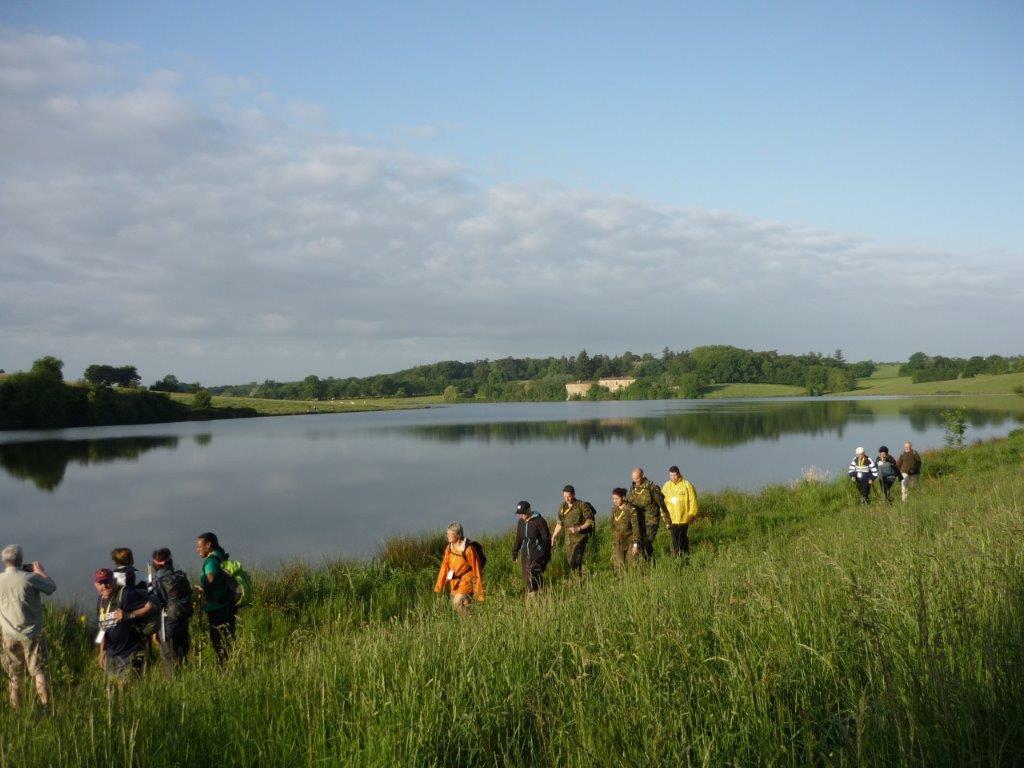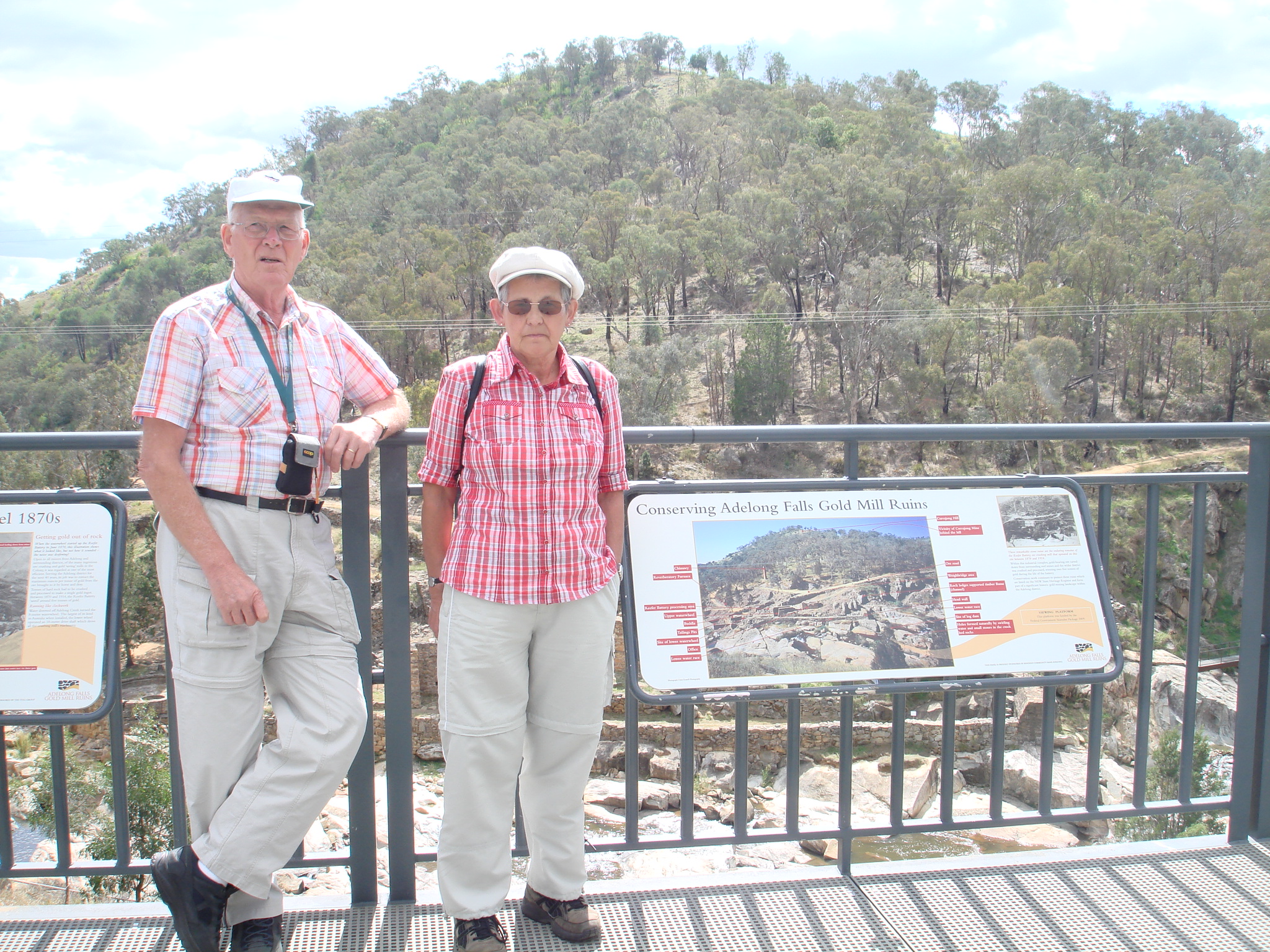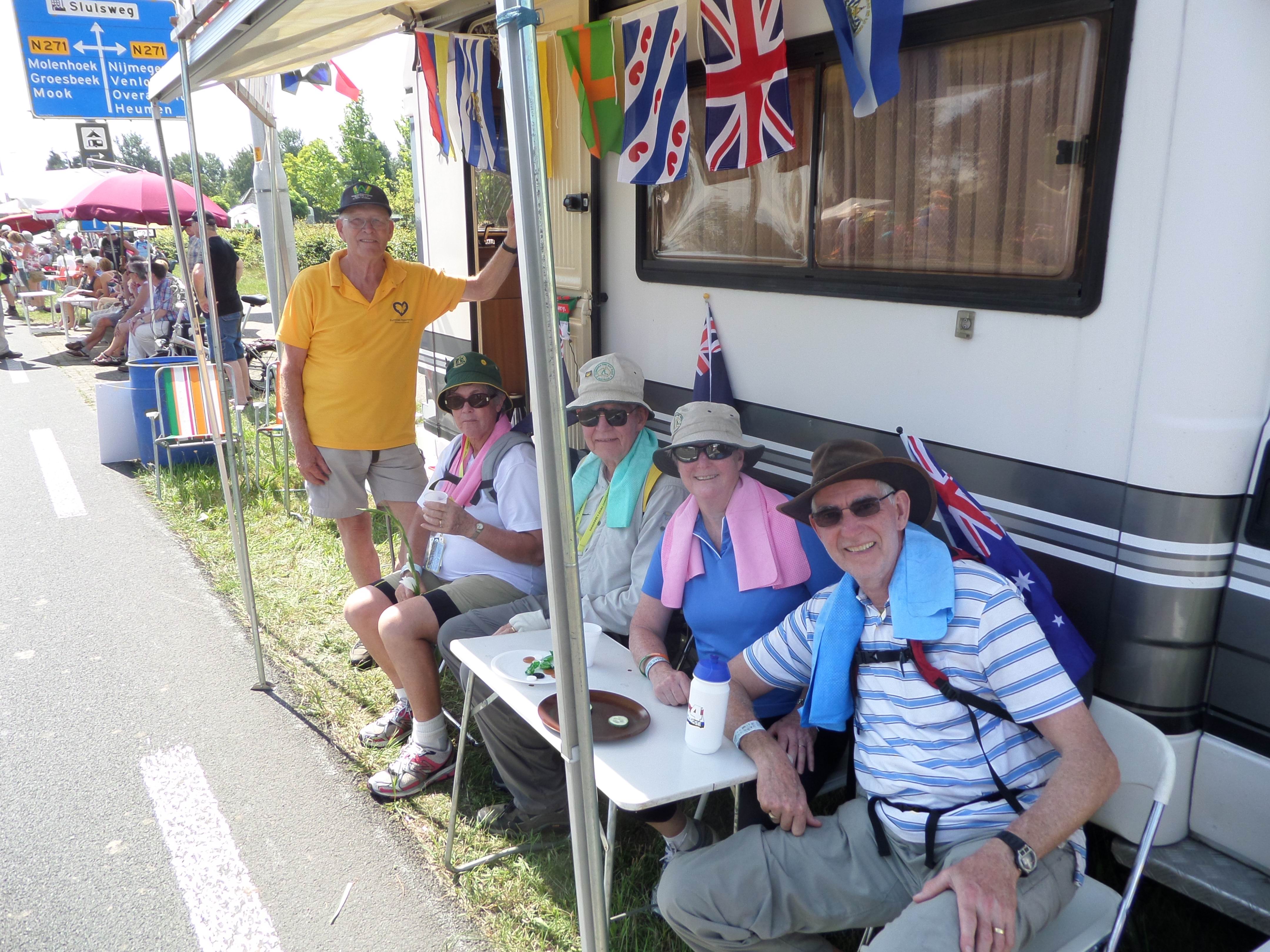 IML walker Anthony (Tom) Buykx has participated in 18 of our C2DW events. He has also walked in 20 other IML countries including Austria, Belgium, Canada, Czech Republic, Denmark, England, Finland, France, Germany, Ireland, Italy, Japan, Luxembourg, New Zealand, Norway, South Korea, Switzerland, Taiwan, the Netherlands, and the USA.
IML walker Anthony (Tom) Buykx has participated in 18 of our C2DW events. He has also walked in 20 other IML countries including Austria, Belgium, Canada, Czech Republic, Denmark, England, Finland, France, Germany, Ireland, Italy, Japan, Luxembourg, New Zealand, Norway, South Korea, Switzerland, Taiwan, the Netherlands, and the USA.
A walker for over 60 years, Tom enjoys the IML walks for many reasons including his friendship with other walkers, a sense of achievement at the end of each walk, the experience of visiting other countries and his collection of IML medals and awards.
A member of the Catholic Walking Club of Victoria, a bushwalking group, he has completed more than 20 walks with his club so far this year. An earlier version of this story appeared in the August 2015 edition of the Catholic Walker, the CWCV newsletter.
R4JCV, the Randonnee de 4 Jours en Chantonnay Vendee, is a four-day IML walk around Chantonnay in the Vendee department of France. Chantonnay is a country town (about 8,600 inhabitants) in western France, about 1 and 3/4 hours by train and bus from the historical city of Nantes.
Every year, commencing on Ascension Thursday (a public holiday in France), the town is host to walkers from all over Europe, with a sprinkling of visitors from further away. I think I was the only one from down under in 2015. Earlier this year, at the IML walks in Rotorua and Canberra, I had met a French walker who rekindled my interest in the Chantonnay walks which I had done once before, in 2008.
And so I arrived in Chantonnay on Tuesday, 12 May 2015. Because I had made my travel arrangements fairly late, I had been unable to get accommodation in town. Thus I finished up in a hotel five kilometres out of town, in a wonderful setting on the shore of a lake. In this hotel I happened to meet the same Frenchman again. He kindly offered me transport to and from the start/finish.
Each day there were five routes, three of which qualified as IML walks. I opted for the 21km/day routes. The walks all began well out of town so each morning several buses lined up to take walkers to their starting points. The walkers’ guidebook showed very simple sketch maps of the routes, but they were all so well sign-posted that maps were not necessary.
Alongside the narrower paths and tracks the grass had been cut to facilitate the walking and in a few fields a path had been cut through the growing crop. There was much variety in the countryside here: grassy meadows with cream-coloured cows, ploughed brown fields with young green plants coming up, here and there a vineyard, patches of forest, a lake, a stream. The country is quite undulating, the roads and tracks are often hedged with shrubs and trees, and if not hedged they provide lovely views.
Every six or seven kilometres there was a rest area and/or checkpoint. The rest areas (“ravito” in the local lingo, an abbreviation of “ravitaillement”) were well set up with tables full of fruit, chocolate, brioches (a bakery product that is not quite bread and not quite cake, but very nice), muesli bars and drinks (but no cups!) all for free. Walkers had to provide their own cups, and to promote this the organising walking club sold quite nice souvenir cups for a few euros each. The entry fee was 24 euros.
On Ascension Thursday, 14 May, we started from somewhere south of Chantonnay. It was overcast and there was some rain from time to time. Some of the tracks were quite muddy, but everyone seemed to cope with the conditions. The route passed only one village, and then really only its outlying houses.
In the afternoon, the weather cleared up nicely. By then I had reached the finish in the local park, where walkers received a “sandwich”, a drink and an apple. The local brass band provided entertainment and the local traders had set up stalls to supply more food and drink. There was a happy atmosphere, just like we have in Canberra at the end of each day, but with many more people. I was glad to catch up with several walkers whom I had met on previous IML walks in other countries.
On Friday, 15 May, the buses took us to a point west of Chantonnay. The first part of the walk was along the forested edge of a large artificial lake. There were people fishing in the lake and camping on the shore. Fishing and hunting are popular pastimes in France — along the tracks I often noticed signs advising vigilance in the hunting season.
The second “ravito” was in the grounds of Chateau l’Auneau where the owner had three vintage cars on display. This property and several other areas we walked through were clearly marked as only open for the day of the walk.
After my return to the park I watched a local folk dance group, mostly senior citizens, go through their elegant paces. I met up again with my French friend, but now to say “au revoir” because he had to be home over the weekend. To get back to my hotel, and for transport on the Saturday and Sunday, I had already put the hard word on the driver of a busload of Belgian walkers and he readily allowed me to travel with them. Yes, walking unites us — “nos jungat ambulare” is the motto the IML.
On Saturday, 16 May, we commenced our walk somewhere northwest of Chantonnay. In anticipation of a forecast sunny day I had bought sunscreen in town, but it was overcast all day. The day’s route was through gently undulating farmland with fields of wheat, barley, oats, rye, and canola. It was very open country and I did not mind the cloud cover. There were two villages on our route, but, as the other day, we did not go through them, only their outskirts. I think it might have been nicer to walk through the village centres, to see their streetscapes, squares, churches and Saturday busy-ness.
At one point we came to and walked alongside a railway line until we had to cross. it. A marshal was stationed here to guide us. There were two ways to do it, he said, but one of them was illegal — over the embankment and rail track. The other was through a culvert under the line. There were steps to get into and out of it, but with only about 1.2 metres [four feet] from wet floor to stony ceiling it was not easy to get through. I was not the only one to knock my head painfully.
The day’s entertainment in the park was provided by a dance group from Barcelona, a city only fairly recently admitted to the IML. There was also a stall where one could sample Spanish goodies, sausages and wine, a good promotion for their walking event.
On Sunday, 17 May, we had our first perfectly sunny day which was wonderful. We were taken east of Chantonnay and started walking at Lake Rochereau. The water was very still with lovely reflections, including those of Chateau Launay. After crossing a tributary flowing into the lake we made our way up to the chateau and the first “ravito” for the day in a barn in its grounds. Once again we skirted the outer parts of a village, this one Sigournais, and eventually we walked back through the centre of Chantonnay to the finish. There were many family groups walking the shorter distances this day, obviously enjoying a good Sunday outing.
At the finished I received a medal and a certificate and had my IML passport stamped. [Note: In all IML events the participant has to walk every day of the event. Most IML walks are run over two days, but some take place over three or even four days.] On the lawns of the park there were signs in the shape of old mileposts showing the names of other IML towns and their distances from Chantonnay. Of course, Canberra and Rotorua were the most distant. This afternoon the local pipe band (bagpipes are not exclusively Caledonian) made themselves heard, albeit not quite like the Scotch do it.
The following day I travelled to the other side of France for a six-day walk in the Jura Mountains near the Swiss border. [But that’s another story ….]

Lake Rochereau










